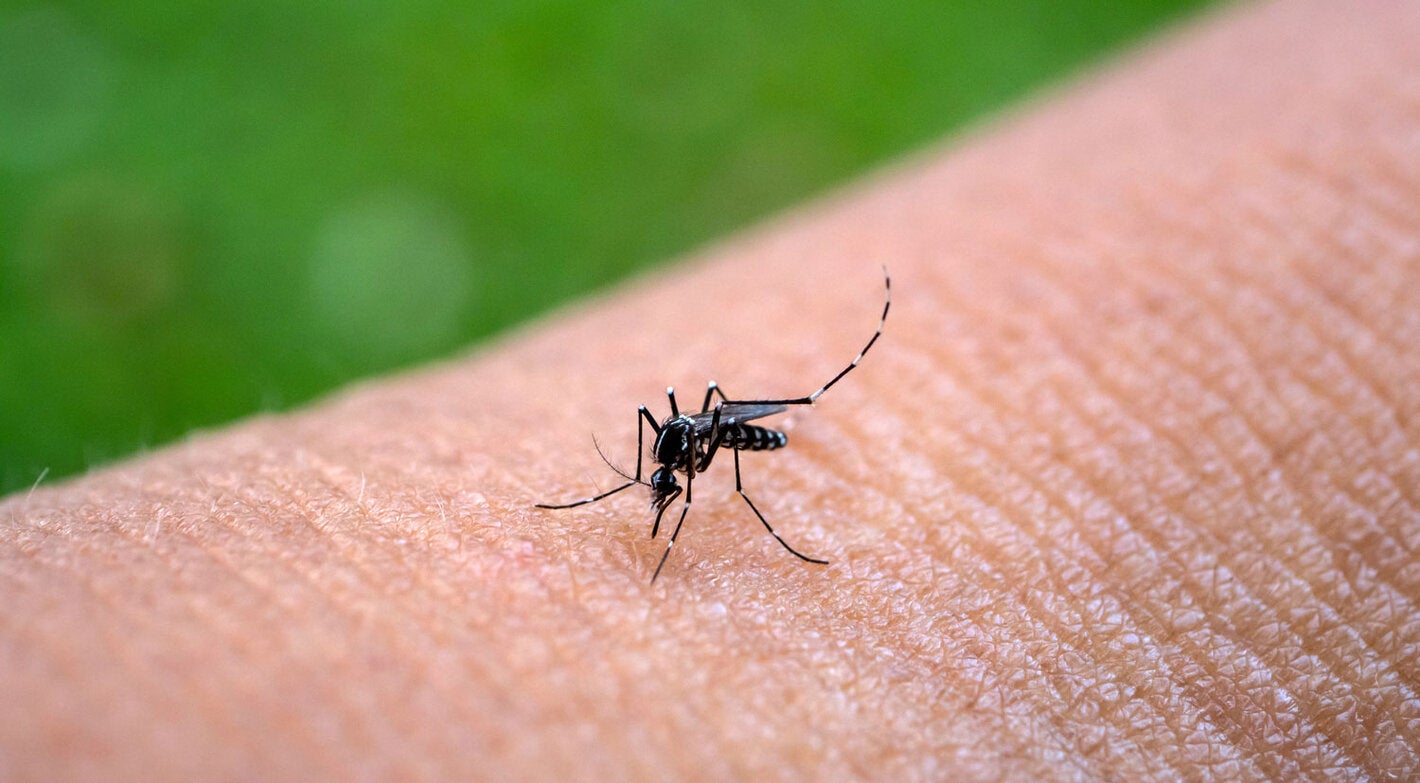
Washington D.C. 4 May 2023 (PAHO) – As cases of chikungunya in the region of the Americas reach over 210,000 in the first months of 2023, experts reviewed in a webinar this week methods to control the disease vector, factors that facilitate its spread and support to countries to tackle a growing number of cases.
Chikungunya is a disease transmitted through the bite of female Aedes mosquitoes infected with the chikungunya virus. The most common symptom is an abrupt onset of fever, often accompanied by joint pain that usually lasts for two weeks.
While disease mortality is low, some patients experience debilitating pain that can last for as long as 6 months, affecting a person’s ability to move, work and take care of herself or others. The name “chikungunya” comes from the African Makonde language and means "bent over in pain.”
The disease has been identified in nearly 115 countries, with seasonal or sporadic outbreaks up to now. In 2023, however, increased chikungunya circulation was detected among five countries in the Americas, greatly surpassing numbers for the same period in previous years.
Situation in the Americas
Chikungunya was first detected in the Americas in 2013 in the island of St. Martin, and a year later had spread to most countries in the region. Over a million cases were detected in the first year following its introduction in the continent.
In the first four months of 2023, increased chikungunya circulation was detected in the region, with over 214,000 cases reported cases.
“What we see this year are changes in magnitude and timing. The epidemic is much earlier and with more cases than the past few years,” Thais dos Santos, Advisor on Surveillance and Control of Arboviral Diseases at PAHO/WHO said during the World Health Organization (WHO) EPI-WIN webinar: Chikungunya – Experiences from the current response to the outbreak in the Americas.
The hardest hit country is Paraguay, which “recorded its worst epidemic in history with 138,730 cases,” dos Santos added.
Argentina and Uruguay also reported local transmission for the first time in 2023, and Bolivia reported high levels of transmission of both chikungunya (1,150 cases) and dengue (116,224 cases) – another disease transmitted by the same mosquito.
Unplanned urbanization, climate change drive transmission
Climate change is one of the factors contributing to the spread of chikungunya. Unusually high temperatures, anticipated or increased rains and ensuing humidity have led the Aedes mosquitos to be present in areas where it was not previously able to survive.
“Longer stretches of warmer periods in the south of the Americas have enabled the mosquito to do well in places where it didn’t do well before,” dos Santos added.
Increased and unplanned urbanization may also be driving its spread, as Aedes prefer urban and warm environments, seeking water spots within households – such as plant recipients or vases – to breed.
Movement restrictions during the COVID-19 pandemic may have also had an impact on vector control methods, limiting activities such as house control visits to remove breeding sites, along with insecticide resistance.
Controlling the disease
Although there are seven chikungunya vaccines under development – three in Phase-3 clinical trials –currently there is no approved vaccine or specific treatment for the disease.
For now, the best protection is to avoid mosquito bites. Recommended measures include insecticide application, use of nets and extermination of mosquito breeding sites.
“We must engage communities, identify the local mosquito ecology and hotspots, and develop a control plan and strategy,” panelist Dr. Thomas Scott, Professor Emeritus of Entomology and Nematology at University of California Davis, said.
Disease surveillance is also critical, building on the lessons learned from the COVID-19 pandemic in the past three years. “PCR testing capacity has expanded enormously and can be used for other pathogens,” Dr Maria Van Kerkhove, Head of the Emerging Diseases and Zoonoses Unit at WHO said. Similarly, she added, capacities for genomic surveillance to understand circulating viruses has increased, and countries should expand this to other pathogens.
PAHO’s response
The Pan American Health Organization (PAHO) in January warned about increasing cases of chikungunya, especially affecting Paraguay, and on 13 February published an alert calling on countries in the region to strengthen measures to diagnose and manage the disease.
The organization has conducted seven technical missions to Paraguay and Bolivia since the beginning of the outbreak to provide support in clinical management, surveillance, laboratory and in integrated vector control.
“We trained thousands of clinicians, filling an important gap in the management of the disease,” dos Santos said. The organization also quickly arranged for experts from countries with more experience with the virus, such as Brazil, to assist others with less or no experience in areas such as genotyping or in the management of pediatric cases.
PAHO also implemented innovative strategies for collaborative surveillance among countries using shared virtual spaces to support automated analysis and visualization for case data, and is working on an integrated vector management tool to help countries map risk areas for vector circulation to inform quick interventions.



